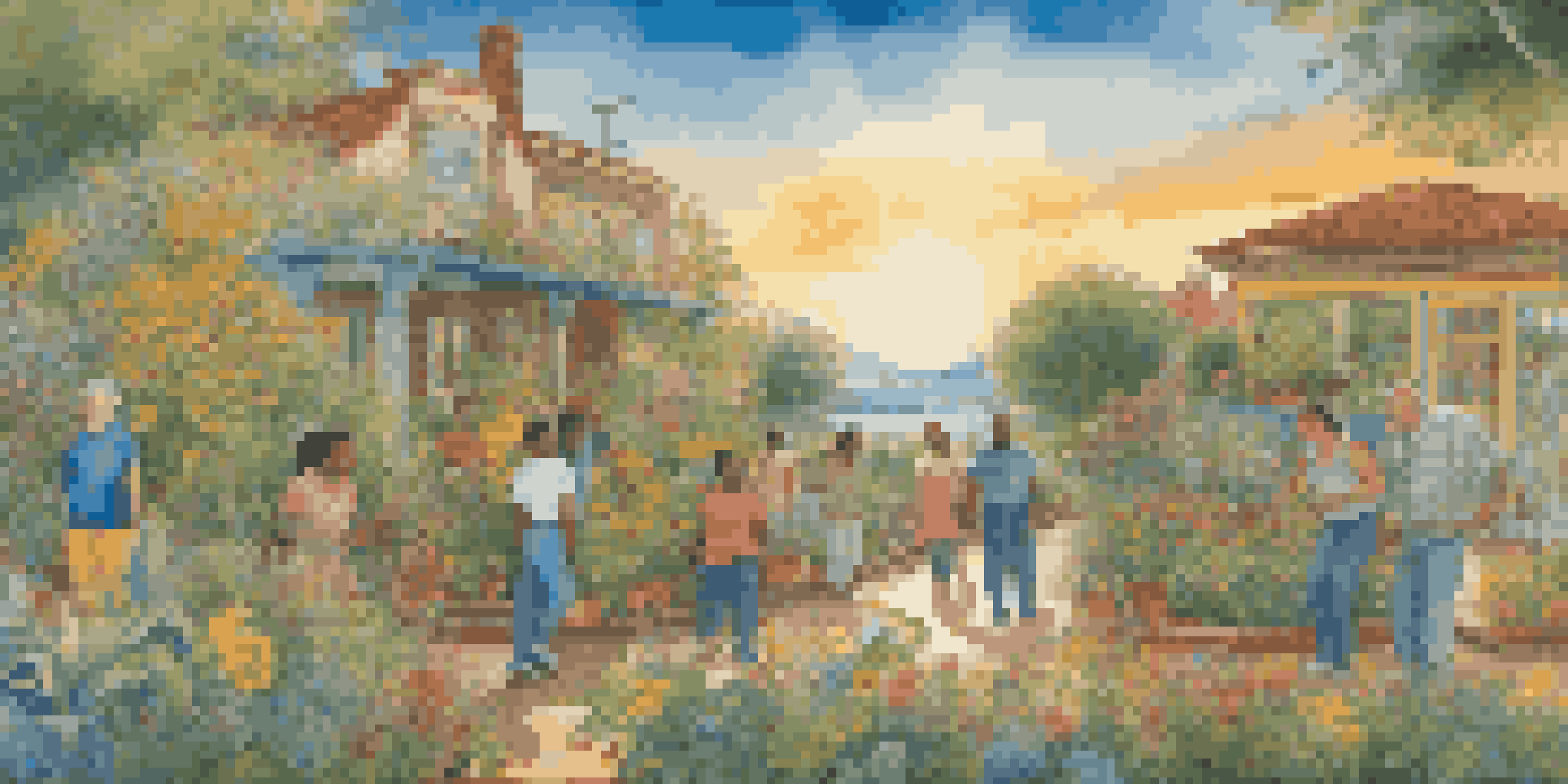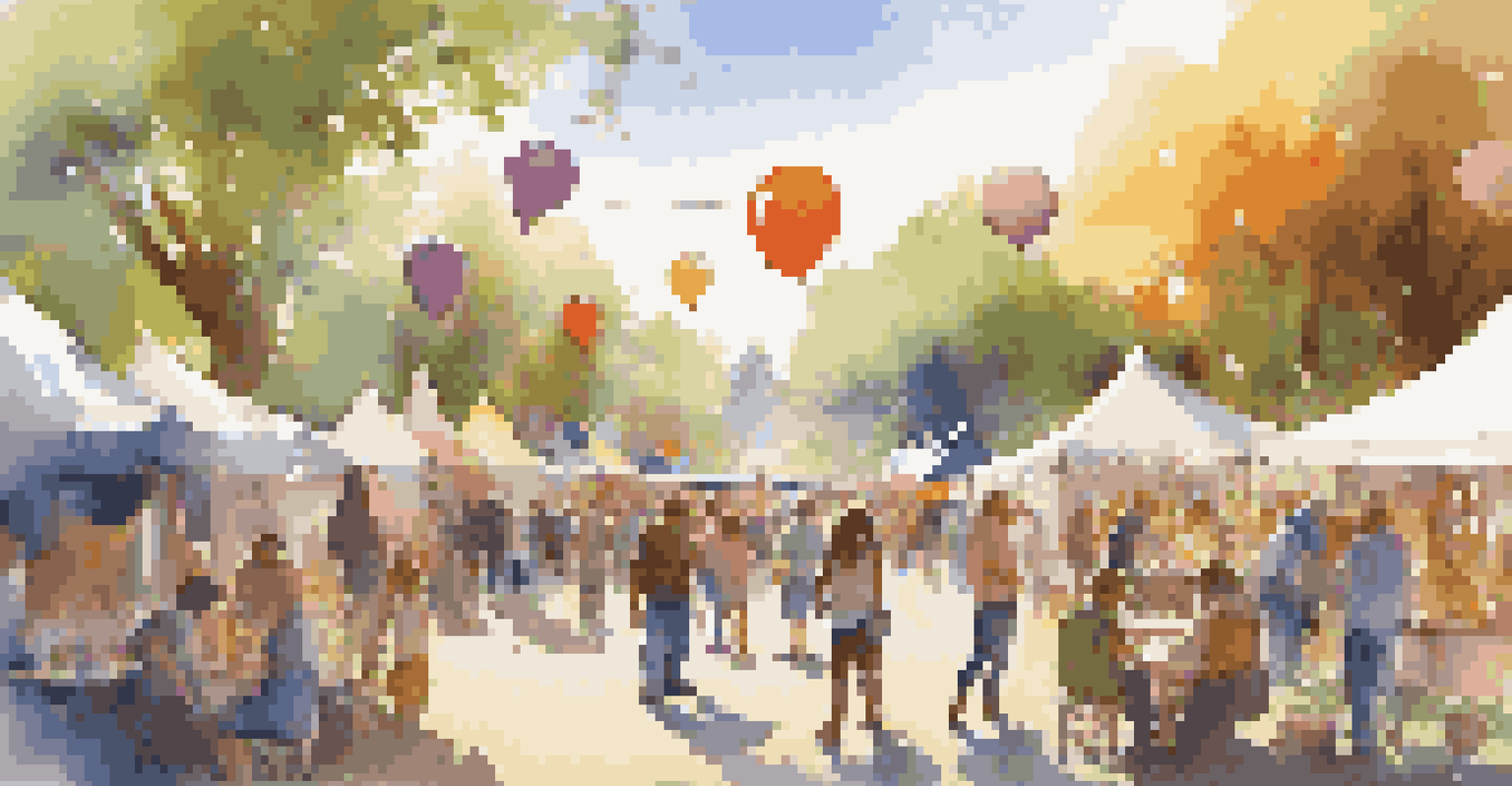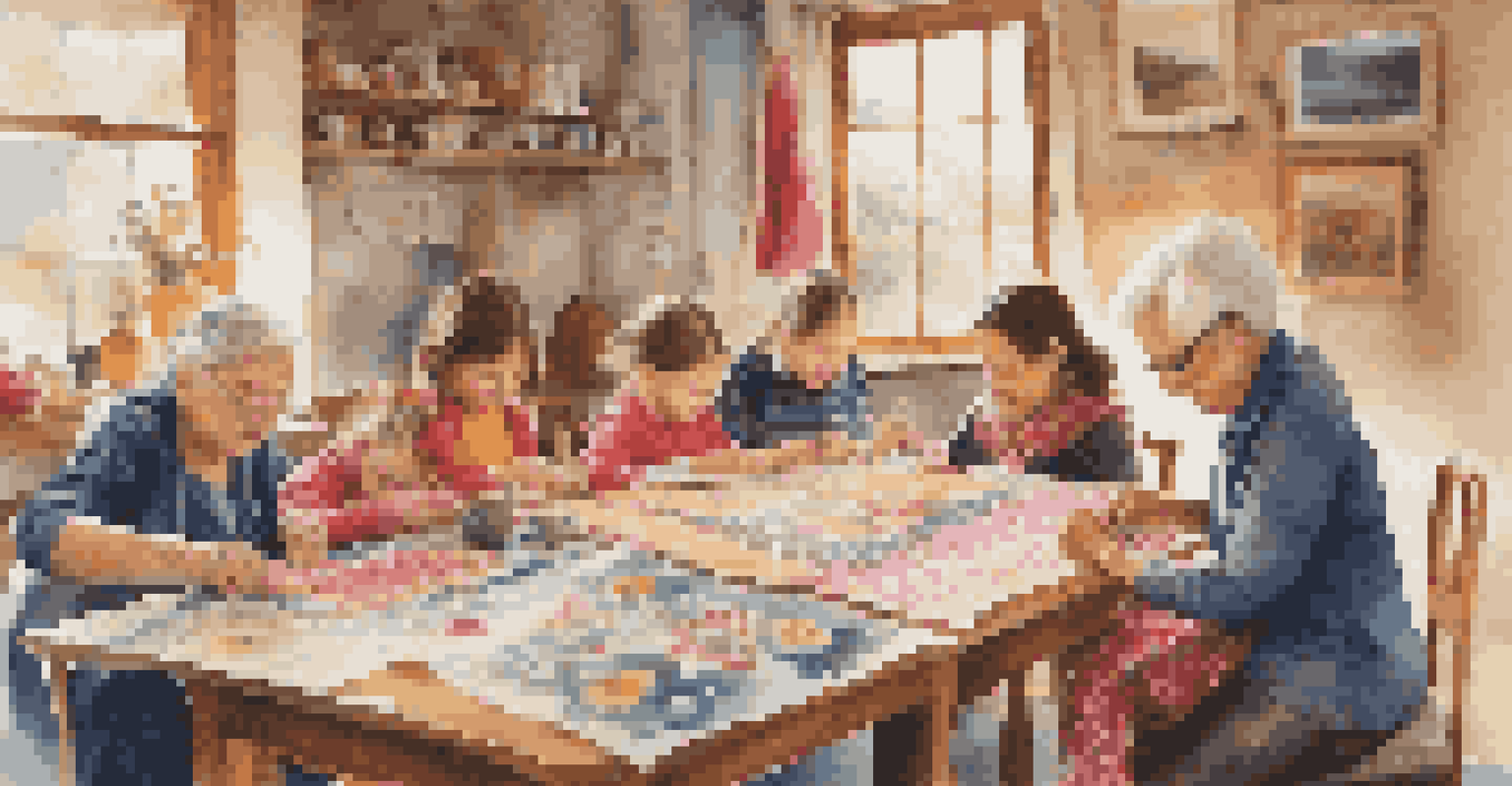Art and the Community: Collective Creative Efforts

The Power of Art in Building Community Connections
Art serves as a universal language that transcends barriers, fostering connections among diverse groups. Whether it's a mural that brightens up a neighborhood or a community theater production, art invites participation and collaboration. These collective efforts create a sense of belonging and shared identity, making individuals feel valued and heard within their community.
Art enables us to find ourselves and lose ourselves at the same time.
When people come together to create, they share their stories, experiences, and perspectives. This collaborative process not only enriches the artwork but also strengthens social ties. For example, a community garden project where locals paint garden signs can turn into a gathering space, sparking conversations and friendships.
Furthermore, the visual impact of communal art can draw attention to local issues, inspiring change. By uniting through creativity, communities can express their values, celebrate diversity, and raise awareness about important causes.
Examples of Successful Community Art Projects
Cities around the world have embraced community art projects that highlight local culture and history. For instance, the 'Chicago Mural Program' has transformed neighborhoods into vibrant outdoor galleries, showcasing the talents of local artists while encouraging community involvement. Such projects not only beautify spaces but also instill pride among residents.

Another inspiring example is the 'StoryCorps' initiative, where individuals share their personal stories through recorded interviews. These narratives are then transformed into animations or illustrated stories, creating a rich tapestry of community voices. This method fosters empathy and understanding among participants, bridging gaps across different demographics.
Art Builds Community Connections
Art transcends barriers, fostering collaboration and a sense of belonging among diverse groups.
These projects illustrate that art can be a catalyst for social change, addressing issues such as diversity, inclusion, and even environmental concerns. When communities come together to create, they amplify their voices and create a lasting impact that resonates beyond the art itself.
The Role of Local Artists in Community Engagement
Local artists play a crucial role in driving community engagement through their unique perspectives and skills. They often act as facilitators, bringing people together to explore their creativity while enhancing their sense of belonging. By leading workshops or collaborative projects, artists can inspire community members to express themselves artistically.
The arts are not a luxury. They are a necessity; they are essential to our well-being, our communities, and our democracy.
Moreover, local artists understand the cultural nuances of their communities, often using their work to reflect shared experiences and aspirations. Their art becomes a vehicle for storytelling, allowing community narratives to be shared and celebrated. This connection fosters a deeper appreciation for the diversity within the community.
As artists engage with residents, they also help to spark discussions around important topics, from social justice to environmental sustainability. By using their platforms to address these issues, artists empower communities to take action, proving that creativity can drive positive change.
Art Festivals: Celebrating Collective Creativity
Art festivals are a vibrant expression of collective creativity, bringing together artists, musicians, and community members for a shared celebration of culture. These events provide an opportunity for people to connect, collaborate, and appreciate the diverse talents within their community. From street fairs to large-scale art exhibitions, festivals create an inclusive atmosphere that encourages participation.
During these festivals, attendees often engage in hands-on activities, such as painting murals or crafting sculptures, which fosters a sense of ownership and pride. For example, the 'Festival of the Arts' in various cities invites local artists to showcase their work while offering workshops for community members to learn new skills.
Local Artists Drive Engagement
Local artists facilitate community involvement, encouraging residents to express themselves and share their narratives.
Furthermore, art festivals can serve as a platform for addressing social issues, as many incorporate themes that resonate with the community. By promoting dialogue and understanding, these events strengthen community bonds and inspire further creative efforts.
Art as a Tool for Social Change
Art has long been recognized as a powerful tool for social change, and community-driven projects are no exception. Through collective creative efforts, communities can address social issues, advocate for justice, and amplify marginalized voices. Art becomes a medium for storytelling, allowing individuals to share their experiences and challenge societal norms.
For instance, initiatives like 'The Mural Project' encourage artists to create works that reflect issues such as racial inequality or environmental concerns. These murals not only beautify public spaces but also serve as a call to action, inviting viewers to engage with the message behind the artwork.
By harnessing the power of art, communities can foster dialogue around critical issues, ultimately inspiring action and change. Collective creativity has the potential to unite individuals in a shared vision for a better future, proving that art is indeed a catalyst for societal transformation.
Bridging Generations Through Community Art
Community art projects can effectively bridge the generational gap, allowing younger and older members to collaborate and learn from each other. These initiatives often bring together individuals with diverse skills and perspectives, creating an enriching environment for all involved. For example, a community quilt project can involve children learning stitching techniques from their grandparents, fostering intergenerational bonding.
Art serves as a timeless medium that transcends age, allowing individuals to express their thoughts and emotions creatively. By working together on art projects, different generations can share their stories, traditions, and experiences, creating a rich tapestry of community history.
Art Festivals Celebrate Diversity
Art festivals create inclusive spaces for collaboration, allowing communities to engage in hands-on activities and address social issues.
Moreover, these interactions help to dispel stereotypes and cultivate understanding between age groups. As younger generations learn from their elders, they gain valuable insights into their community's past, while older individuals are inspired by fresh ideas and new approaches to creativity.
The Future of Art in Community Development
As communities continue to evolve, the role of art in community development is becoming increasingly vital. With a growing emphasis on sustainability and inclusivity, creative initiatives are being designed to address contemporary challenges. For example, urban spaces are being transformed into art-friendly zones that promote collaboration, innovation, and social interaction.
Looking ahead, technology is also playing a significant role in shaping community art projects. Digital platforms allow artists to connect with community members in new ways, facilitating remote collaborations and virtual exhibitions. This adaptability ensures that art remains a relevant and accessible tool for engagement.

Ultimately, the future of art in community development lies in its ability to unite individuals around shared goals and aspirations. By continuing to embrace collective creativity, communities can foster resilience, celebrate diversity, and inspire positive change for generations to come.